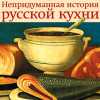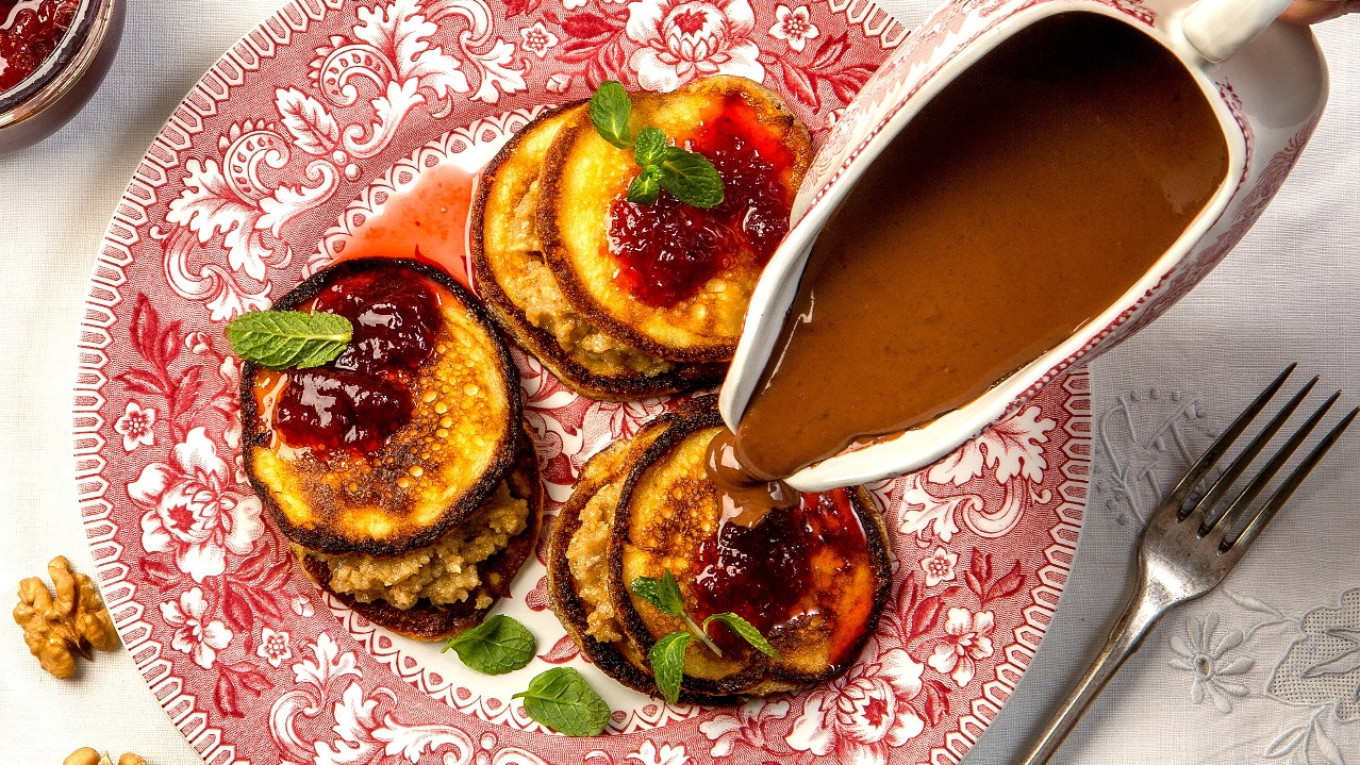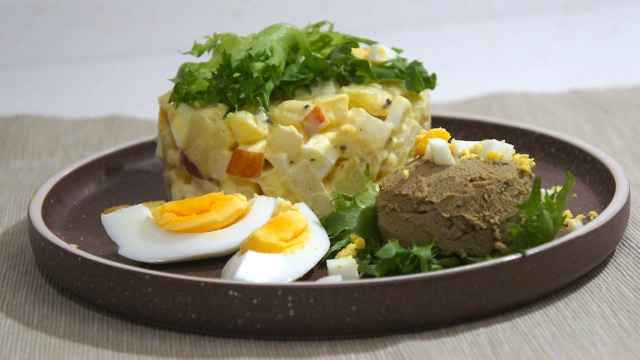Our ideas about fasting during Lent in the past, like so many of our ideas about pre-revolutionary life in general, are often very far from reality. The common belief is that centuries ago all Russians were God-fearing and spent much time and effort trying to observe the Lenten fast.
The situation was far more complicated.
In fact, in 1675 the famous Archpriest Avvakum denounced the clergy’s sins of gluttony: “You, monk, look like a pregnant woman who ties her belt under her breasts so as not to harm the child growing within. In your belly is the equivalent of a child in almonds and Rhine wine and Madeira and various vodkas. How can you keep your robe closed?”
Of course, some people did fast with humility, but their fasts were somehow quite different than what we imagine today. “You should buy smaller portions of the good sturgeon — not the cheap sturgeon from the Caucasus, but fish from the Don River at the very least. There is big difference in flavor.” This was the advice for Lent in the magazine “Our Food” in 1893.
Fasting isn't just radishes and buckwheat. Over many centuries inventive Russians developed many dishes that were good to eat — not just good for spiritual growth.
For example, in “The History of the Kazan Theological Academy” published in 1892, its author, historian Peter Znamensky, described the varied diet of students. In general, Russian priests have traditionally loved to eat, and so they paid a lot of attention to their meals. Their Lenten dishes were quite elaborate: “Lenten meals consisted of various kinds of fish cooked in many different ways, often with sauces, potatoes, mushrooms or grains. For dessert: cake or porridge. There was a great variety of sweets: pies were made with raisins, berries or apples. Along with pies were levashniki (pies with pureed berries), pshenniki (millet-based casseroles), pancakes and waffles.”
One of the most popular Lenten dishes in the olden days was the kundyum – a kind of ancient version of pelmeni filled with mushrooms, buckwheat or fish. They weren’t boiled but baked in the oven until golden brown. They could be served with a broth made of mushrooms or fish.
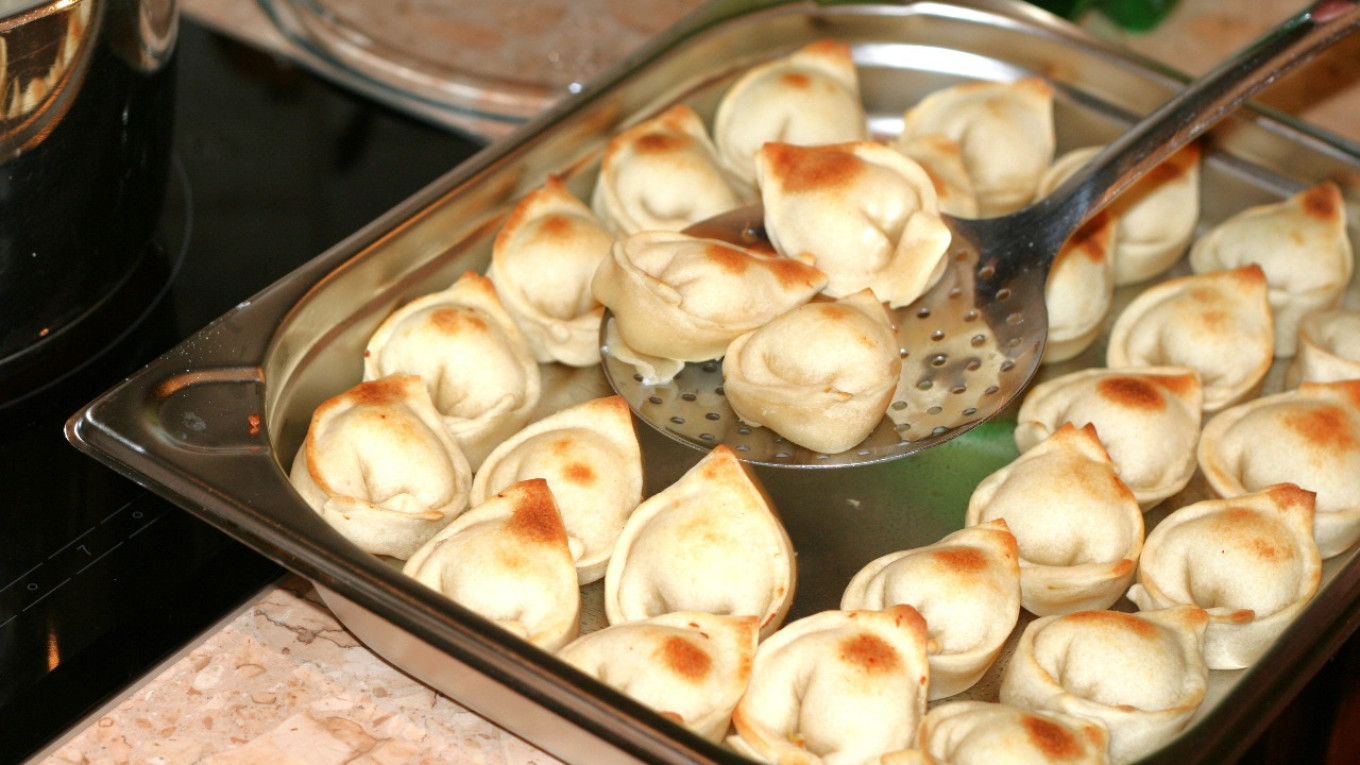
Another dish was telnoye, a kind of minced fish cutlet. Minced fish (in the past — a fillet beaten in a mortar) was mixed with spices and onions and then fried in vegetable oil. In the 17th century these patties were shaped like hares, fish or piglets. Later, they were simply round. At the end of the 19th century this dish was transformed into a kind of zrazy: crescent-shaped minced fish stuffed with chopped fish, boiled eggs and onions.
Today it’s much easier to keep a fast. Even in April you can go to the store and buy fresh fruits and vegetables, apricots, prunes, and nuts. But three hundred years ago, only nuts were available to the average person.
Professor Sergei Bakhrushin (1882-1950), a Russian and Soviet historian, Corresponding Member of the USSR Academy of Sciences, wrote: “In the 10th century, the famous ‘kalen nuts’ of the Middle Volga region were used as bargaining currency between Bulgars with the Arabs.” These nuts —hazelnuts — were roasted on a hot pan or tray without oil or water to make them easier to crack open.

The raw nuts were almost impossible to crack until nutcrackers were used in later years. In the 19th century, a more elegant recipe appeared: the soft nuts were hulled, scalded to remove the brown papery film surrounding the nut in the shell, sprinkled with powdered sugar and baked in the oven until their surfaces caramelized. This was certainly not medieval cooking.
Another treat was jam made from young green walnuts. It was served alone, or sometimes the nuts were taken out of the syrup and dipped in sugar. The result was something like candied walnuts.

There are many Lenten dishes in Russian cuisine. It’s also important to note that fasting in the 21st century is not like fasting in the 16th century. Today fasting can be a kind of diet. Don’t hide it! Admit that you gained weight over the New Year’s festivities and have decided to eat nothing but vegetables for a month so that you can fit into your swimsuit by summer. There is nothing shameful in that — and you don’t need to hide it behind a show of high morality.
In Russia today we have noticed that fasting has become a vivid example of “socially approved behavior.” In public, among acquaintances and in social media everyone talks and writes about how much they love cabbage soup, buckwheat with mushrooms and serious fasting. But actually when no one is looking they like to stop in a Georgian dumpling shop or pizza parlor.
Our advice is simple: If you slip up and thoughtlessly eat an egg, don't worry that you'll never cleanse away the sin.
Well, in any case, that's what we think. And that's why we happily make this amazing nut dish. We hope that you’ll like it.
Nut Filled Panckaes
These delicate pancakes are fast and easy to make and are certain to become a breakfast favorite. The nut filling should be prepared a little in advance.
Pancakes are made two at a time and then the nut filling is spread between them. Served with strawberry jam and chocolate sauce.
Nut filling
Ingredients
- 50 ml (1/4 c) half-and-half (cream with 10% fat content)
- 40 g (generous 2 Tbsp) sugar
- vanilla sugar
- 70 g (1/2 c) ground nuts
- 1 Tbsp brandy
Instructions
- Bring the cream, sugar and vanilla sugar to a boil and then remove from the heat.
- Add nuts and stir; refrigerate.
- Add brandy.
Pancakes
12 servings
Ingredients
- 250 g (1 c) milk
- vanilla sugar
- zest of half a lemon
- pinch of salt
- 70 g (5 Tbsp) butter
- 120 g egg yolks (6 yolks from large eggs)
- 170 g (1/2 c) egg whites
- 50 g (1/4 c) sugar
- Plain or clarified butter for frying pancakes
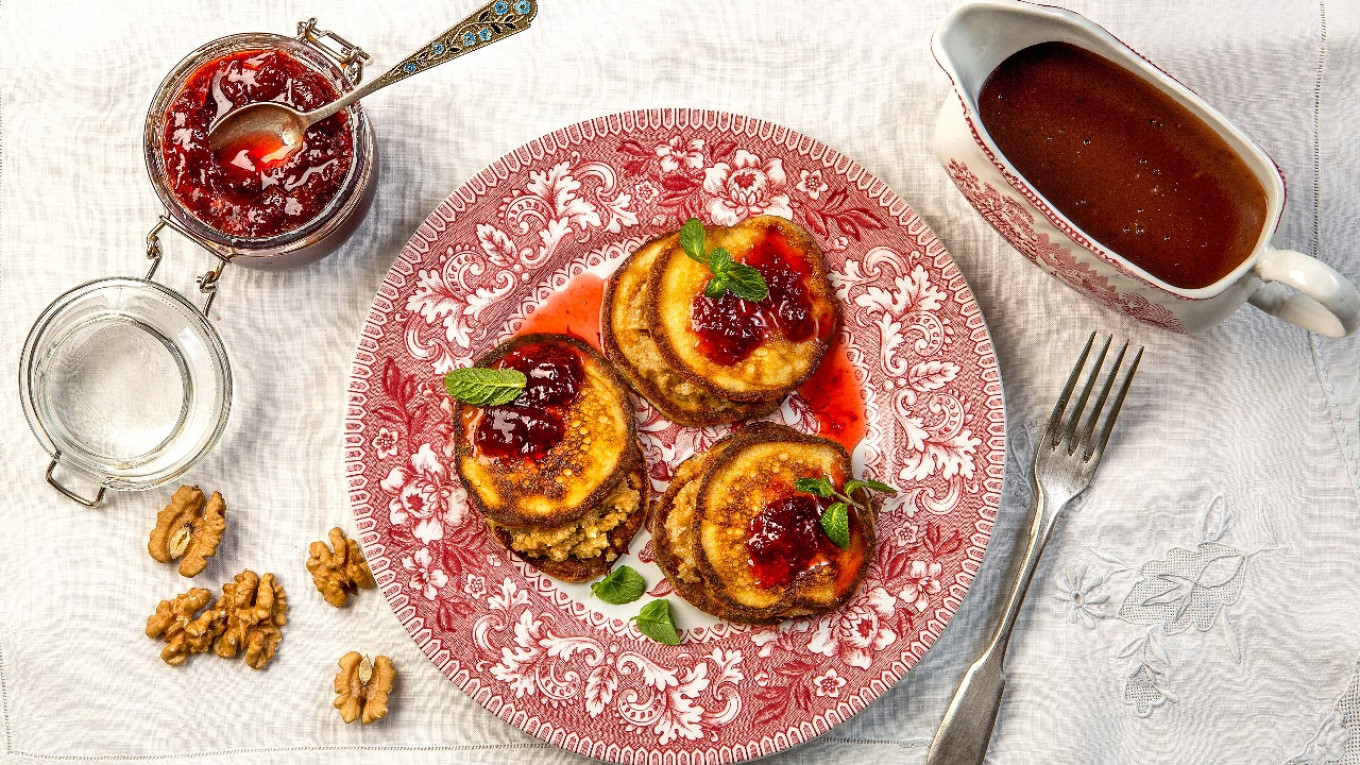
Instructions
- First make the custard base, similar to to a béchamel sauce. In a small saucepan, melt butter and mix with flour.
- Mix the cold milk with the lemon zest, vanilla sugar and salt.
- Make the basis of choux pastry: Pour the milk into the saucepan with the flour, place over medium heat and, stirring vigorously with a whisk, heat until boiling. Any lumps should dissolve.
- Stir over the heat until the mass pulls away from the sides of the pan. Cool slightly.
- Mix whites and yolks, add sugar and whisk.
- Stir the beaten eggs to the choux pastry in several additions.
- On a griddle greased with plain or clarified butter, cook the pancakes on both sides over low heat. Use a spoon to gently spread the batter, or use a special griddle with indentations for the pancakes.
- Spread the nut filling between two pancakes.
A Message from The Moscow Times:
Dear readers,
We are facing unprecedented challenges. Russia's Prosecutor General's Office has designated The Moscow Times as an "undesirable" organization, criminalizing our work and putting our staff at risk of prosecution. This follows our earlier unjust labeling as a "foreign agent."
These actions are direct attempts to silence independent journalism in Russia. The authorities claim our work "discredits the decisions of the Russian leadership." We see things differently: we strive to provide accurate, unbiased reporting on Russia.
We, the journalists of The Moscow Times, refuse to be silenced. But to continue our work, we need your help.
Your support, no matter how small, makes a world of difference. If you can, please support us monthly starting from just $2. It's quick to set up, and every contribution makes a significant impact.
By supporting The Moscow Times, you're defending open, independent journalism in the face of repression. Thank you for standing with us.
Remind me later.

